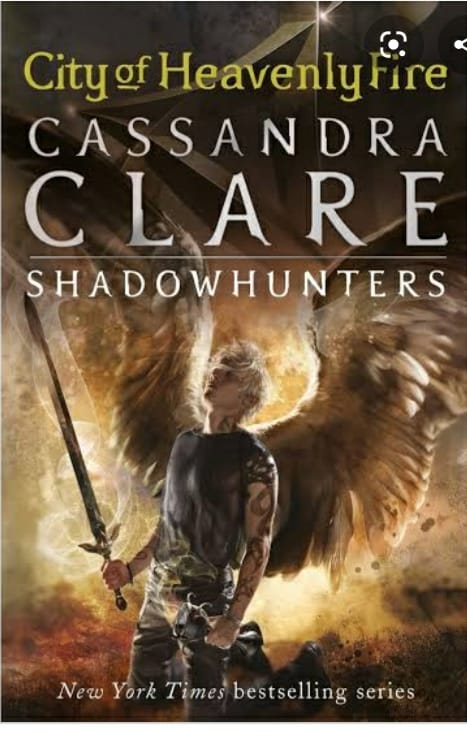The Mortal Instruments 6: City of Heavenly Fire – An 800-Word Deep Dive
Explore plot, themes, and series impact of Cassandra Clare’s City of Heavenly Fire, the explosive finale to The Mortal Instruments.

Introduction: A Fiery Finale Worth the Wait
City of Heavenly Fire, the sixth and final installment in Cassandra Clare’s original Mortal Instruments series, lands with the impact of a seraph blade. First released in 2014, the novel closes the curtain on the epic conflict between Shadowhunters and Sebastian Morgenstern’s dark army. Longtime fans have waited through cliff-hangers, betrayals, and complicated romances to discover how Clary, Jace, Simon, Isabelle, Alec, and Magnus will fare. With a sprawling cast, a war that threatens both the mundane world and the Shadow Realm, and nods to future series, the book must balance payoff and setup. Does it succeed? Let’s explore what makes this finale burn so brightly.
Plot Overview (Spoiler-Light)
City of Heavenly Fire opens on an uneasy New York, reeling from Sebastian’s brutal attacks on Shadowhunter Institutes worldwide. When the demon-tainted villain strikes Idris—the hidden country of the Nephilim—our heroes realize they can no longer protect their loved ones by staying put. Clary Fray and Jace Herondale, now bound not just by love but by heavenly fire coursing through Jace’s veins, embark on a mission to find and stop Sebastian before the Shadowhunter race is corrupted beyond recognition. Between skirmishes in forgotten territories, clandestine meetings in the faerie realm, and daring portal travel, the stakes escalate chapter after chapter. Yet Clare intersperses the mayhem with quiet scenes of friendship, humor, and heartbreak, ensuring readers remain emotionally anchored.
Themes and Character Arcs
Family and Identity
At its heart, City of Heavenly Fire is a meditation on chosen versus blood family. Clary confronts the legacy of her father, Valentine, and her brother, Sebastian—two radical figures whose actions shaped the very war she fights. Meanwhile, Simon wrestles with his vampiric immortality and memories that may soon vanish, questioning what makes him, him. The Lightwoods prove that loyalty can be stronger than lineage as Isabelle and Alec stand shoulder to shoulder against impossible odds. Each character’s journey reinforces the idea that who you become matters more than where you began.
Light Versus Darkness
The novel literalizes the eternal conflict between light and darkness through the heavenly fire inside Jace, a power capable of both salvation and destruction. Sebastian’s Endarkened Shadowhunters mirror this concept, showing how easily light can be corrupted. Clare avoids a simplistic binary by depicting morally gray choices—alliances with faeries, sacrifices of personal happiness, and uneasy pacts with demons—highlighting that victory often requires stepping into the shadows without losing your inner glow.
World-Building and Mythology
If you adore expansive fantasy universes, City of Heavenly Fire delivers in spades. We journey from the gleaming glass towers of Alicante to demon-ravaged Edom, a hell dimension dripping with gothic atmosphere. Clare expands angelic lore, introduces new runes, and seeds mythology that flowers later in the Dark Artifices and The Last Hours trilogies. The book’s rich descriptions, peppered with Latin incantations and ancient rituals, deepen the sense that the Shadowhunter Chronicles form a living, breathing tapestry stretching back millennia.
Reading Order and Series Context
Newcomers frequently ask whether they can jump straight into City of Heavenly Fire. The honest answer: you’ll enjoy it far more after reading the first five Mortal Instruments books—City of Bones, City of Ashes, City of Glass, City of Fallen Angels, and City of Lost Souls—as well as the prequel Clockwork Princess from The Infernal Devices. Chronologically, City of Heavenly Fire bridges to Lady Midnight, making it essential before tackling The Dark Artifices. Experienced readers will relish the Easter eggs foreshadowing Emma Carstairs, the Blackthorns, and pivotal court politics in Faerie.
Why City of Heavenly Fire Matters to the Shadowhunter Universe
Beyond concluding a single series, City of Heavenly Fire functions as a narrative hinge for Clare’s broader world. It resets the political balance among Shadowhunters, Downworlders, and heavenly entities, introduces game-changing magical consequences, and permanently scars beloved characters—in ways fans still debate almost a decade later. Without this book, Magnus and Alec’s future adventures lack their emotional foundation, Simon’s route to Shadowhunter Academy never opens, and Clary’s artistic legacy loses its heroic flourish. In short, the entire mythos would feel dimmer.
Final Verdict: Should You Read It?
Clocking in at over 700 pages, City of Heavenly Fire is not lightweight reading, yet its pacing rarely drags. Cassandra Clare balances blockbuster action with laugh-out-loud banter and tear-inducing goodbyes. If previous installments hooked you, the finale offers catharsis, character growth, and a pathway to fresh adventures. Even if certain subplots might have benefited from tighter editing, the emotional payoff is undeniable. City of Heavenly Fire stands as a bright blaze in modern young adult fantasy, illuminating both the cost and worth of fighting for the people you love.



